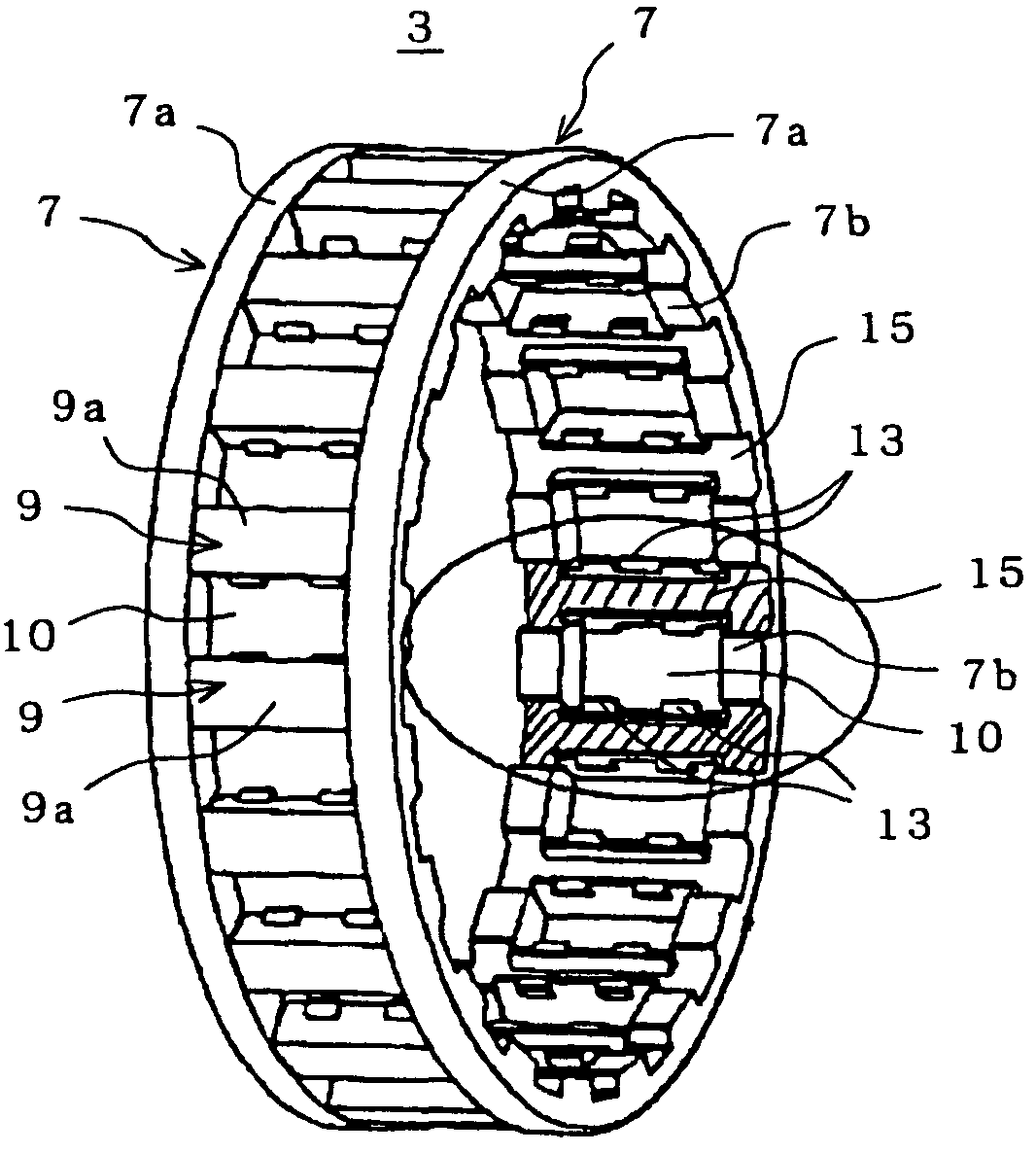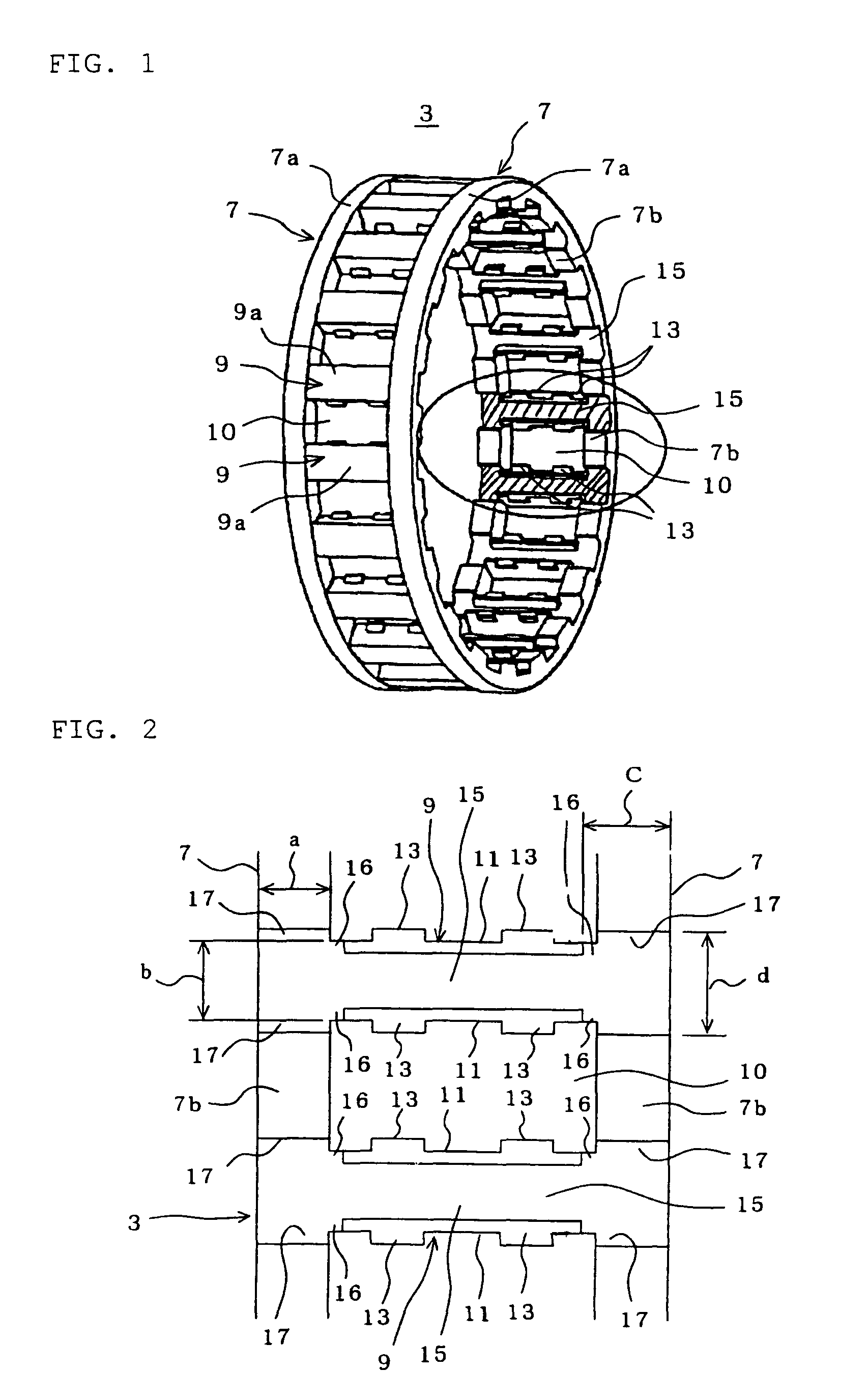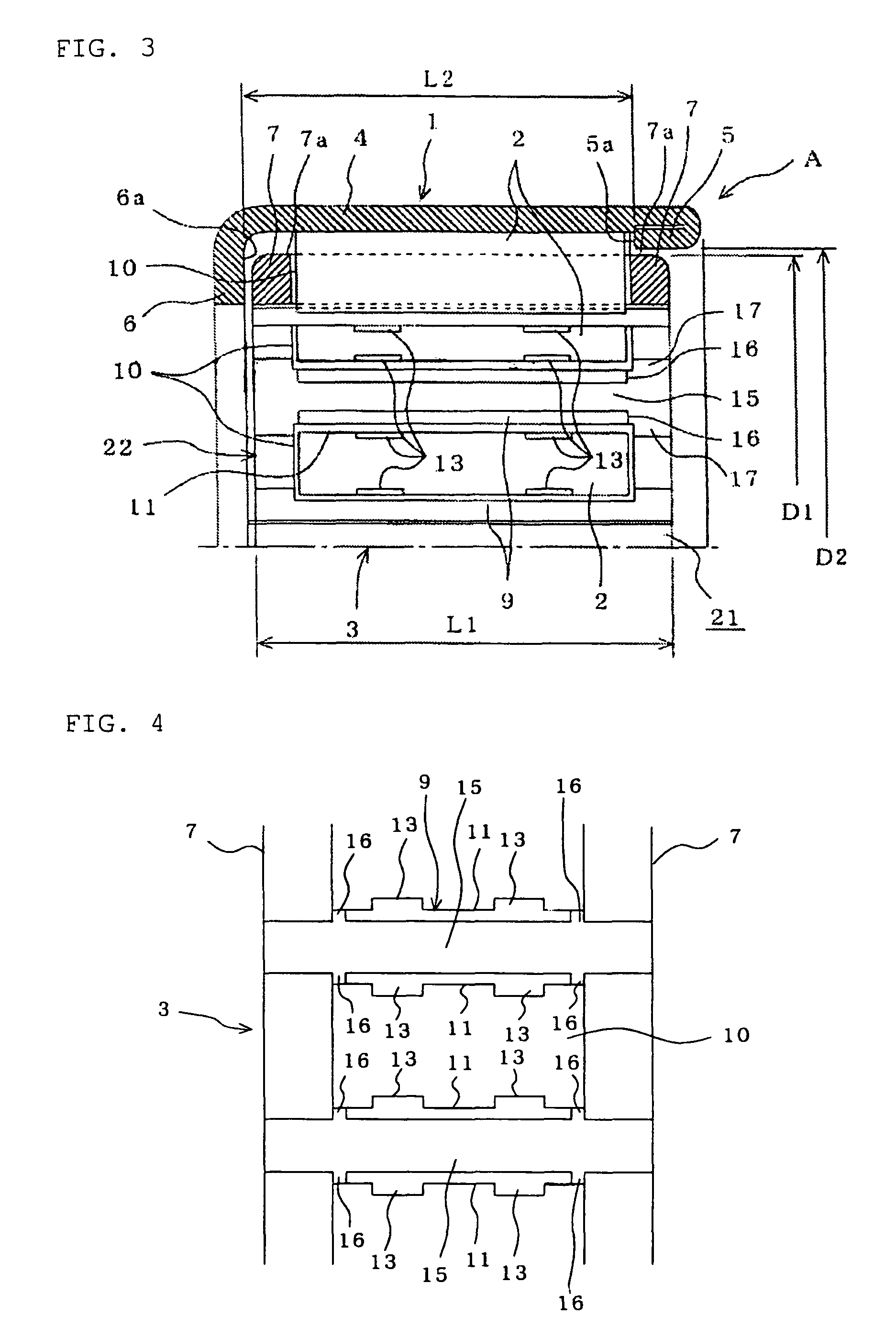Cage for roller bearing
a cage and roller bearing technology, applied in the direction of rotary bearings, shafts and bearings, rolling contact bearings, etc., can solve the problems of large roller-pushing load, inability to easily insert inability to so as to improve the ability of incorporating cages and rollers into outer rings, prevent the deformation of roller retaining portions, and easy deformation
- Summary
- Abstract
- Description
- Claims
- Application Information
AI Technical Summary
Benefits of technology
Problems solved by technology
Method used
Image
Examples
first embodiment
[0020]FIG. 1 is a perspective view of a first embodiment of a roller bearing cage of the present invention, FIG. 2 is a plan view of an important portion of the roller bearing cage as seen from a back surface-side thereof, and FIG. 3 is an enlarged partially cross-sectional view of a roller bearing provided with the roller bearing cage.
[0021]In these Figures, reference numeral 1 denotes a drawn cup outer ring, reference numeral 2 denote a needle roller, and reference numeral 3 denotes the roller bearing cage. The needle roller bearing A is formed by the outer ring 1, the needle rollers 2 and the cage 3.
[0022]The outer ring 1 includes a tubular raceway portion 4, and a pair of ribs 5 and 6 formed respectively at axially opposite ends of the raceway portion 4, and this outer ring 1 is formed into a one-piece construction. One rib 5 is smaller in thickness than the raceway portion 4, and is bent to be disposed contiguous to an inner peripheral surface of the raceway portion 4 over an e...
second embodiment
[0044]FIG. 4 is a plan view of an important portion of a second embodiment of a roller bearing cage of the invention as seen from a back surface-side thereof.
[0045]In the second embodiment of the invention shown in FIG. 2, those portions similar in construction to the corresponding portions of the first embodiment will be designated by identical reference numerals, respectively, and explanation thereof will be omitted.
[0046]In the first embodiment, the separation groove portions 16 and the width-increasing groove portions 17 are formed at the concave groove 15. In this second embodiment, however, only separation groove portions 16 are formed at each concave groove 15
[0047]Namely, the concave groove 15 is formed in each pillar portion 9 and annular portions 7, and in addition the separation groove portions 16 are formed respectively at opposite sides of those portions of the concave groove 15 disposed respectively at opposite ends of the pillar portion 9, and extend respectively to t...
PUM
 Login to View More
Login to View More Abstract
Description
Claims
Application Information
 Login to View More
Login to View More - R&D
- Intellectual Property
- Life Sciences
- Materials
- Tech Scout
- Unparalleled Data Quality
- Higher Quality Content
- 60% Fewer Hallucinations
Browse by: Latest US Patents, China's latest patents, Technical Efficacy Thesaurus, Application Domain, Technology Topic, Popular Technical Reports.
© 2025 PatSnap. All rights reserved.Legal|Privacy policy|Modern Slavery Act Transparency Statement|Sitemap|About US| Contact US: help@patsnap.com



